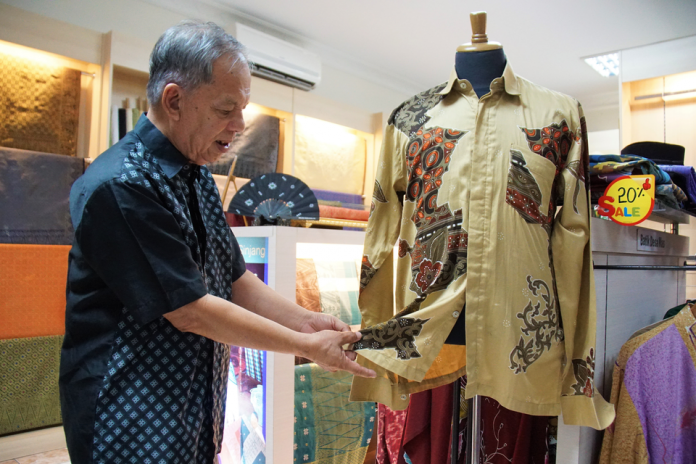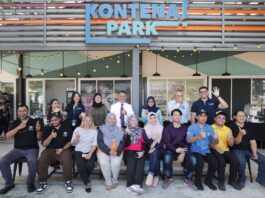It’s been two decades since Hj Zainal Abidin Hj Ibrahim decided he would attempt to produce Brunei’s first commercial line of batik clothing.
Then in his late 40s, Hj Zainal had already established himself creatively, beginning as an illustrator for the government’s Language and Literature Bureau before steering Royal Brunei’s Muhibah magazine for five years.
Well versed in the arts and crafts scene in ASEAN, an aging Hj Zainal wanted one last crack at an artistic medium that had yet to be fully realized in Brunei.
“At the time the (Brunei) market was flooded with imported batik from Indonesia and Malaysia,” said Hj Zainal, the founder of Batik Desamas. “Their workmanship and quality were excellent, but the designs didn’t represent our identity. I wanted us to be able to have our own batik designs that we could be proud of.”
A bridge too far
Academics researching modern batik production in Brunei have Hj Zainal as a guiding reference, but the 67-year-old himself is unsure of batik’s true origins in Brunei.
Technically, batik is not a “style” but instead a textile dyeing method, where beeswax is applied selectively onto the fabric that “resists” certain parts from being coloured, enabling other areas to soak up colour dyes.
After, the wax is removed in boiling water, and the process is then repeated to create different colours and intricate patterns – whose motifs often represent the producing area’s cultural heritage.
“There have been a few records of batik fabric being made in Brunei but usually they’re just sold as fabric, and people either use it as a sinjang (for men over the waist) or bring it to the tailor,” said Hj Zainal. “We’ve never made the leap to do it commercially; we’ve never created our own (off-the-shelf) batik clothing line.”
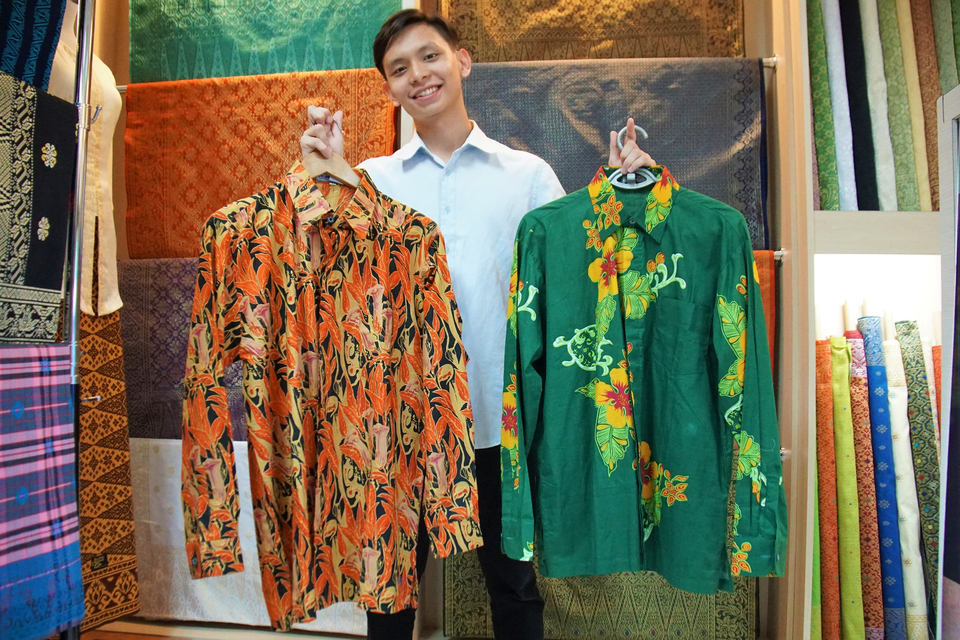
Hj Zainal began by setting up production at his family’s house in Anggerek Desa in the early 2000s. Five years later, he attempted to scale by moving into a factory in Sinaut, Tutong, where he hired up to 10 people, many young Bruneians whom he initiated into the trade.
The gap in his team’s skill was too far to bridge however, and after enduring three years of losses, he was forced to abandon the project.
“It started off well, they (my local employees) were curious, smart and eager, but the problem was it would take at the minimum three years of working to get good at batik, and none stayed long enough as they usually took government jobs,” said Hj Zainal.
“The costs were too high, and the experience just wasn’t there. You’re competing against craftsmen in Indonesia, who’ve spent their entire lives mastering the art of batik.”
From Sinaut to Solo
As he reflected on a failed venture, Hj Zainal knew he needed to be more than a craftsman. As a businessman in his 50s, he couldn’t afford to make another mistake.
He traveled to Indonesia visiting Solo – one of the three main regions in Indonesia where batik is believed to have originated from – and discussed with local craftsmen there whether there was a possibility of producing Bruneian designs.
Traditionally, the intricate patterns seen in batik are drawn by hand, making their outsourcing difficult. Hj Zainal decided that he would circumvent this by digitalizing his drawings and send them over to Indonesia for printing then dyeing.
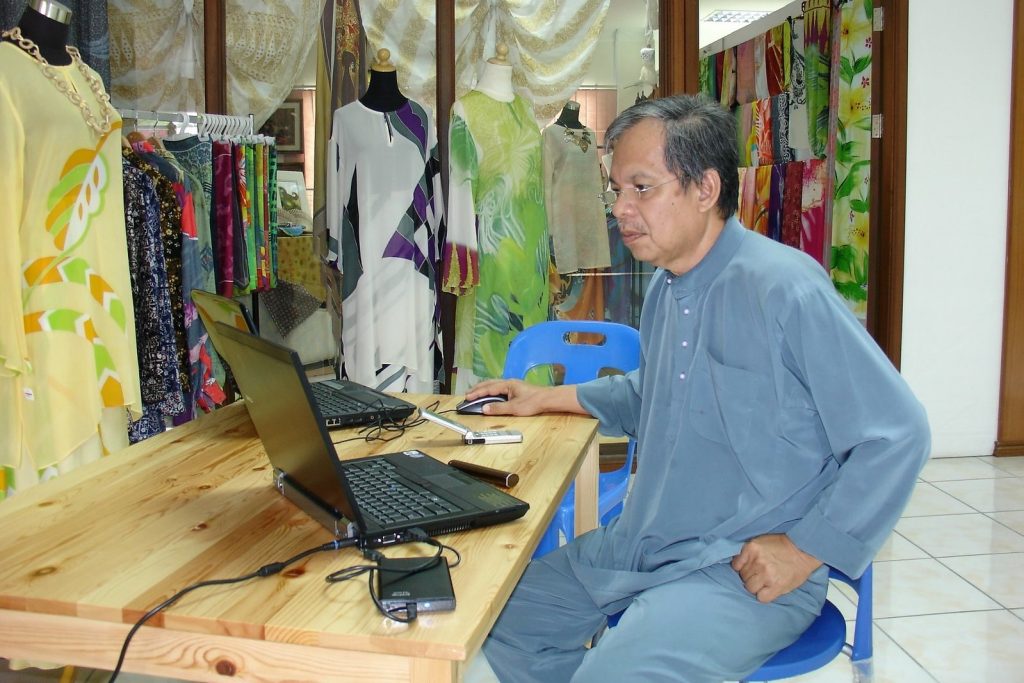
The batik fabrics would then be shipped back to Brunei to be sown locally as men’s shirts. The only missing piece was financing; Hj Zainal’s Sinaut factory had left him almost broke.
He discovered a grant called Leap by the Brunei Economic Development Board and pitched fervently his plan to revive Batik Desamas as a business producing traditional textiles through modern means.
In 2011, he was awarded $150,000.
“We were able to bring down the costs twofold; by digitizing the drawings we saved time and by producing in Solo we got the best workmanship at a very affordable price,” said Hj Zainal. “That grant saved Batik Desamas. Without it, I wouldn’t be here today.”
Constantly evolving
Above the bustling open food court of Sumbangsih Mulia Complex are a handful of local businesses selling traditional merchandise.
It’s fairly quiet by comparison, and most walking through head straight to Batik Desamas. Ironically, the majority aren’t stopping by to purchase batik.
They’re looking for Hj Zainal’s newest creation Kain Tanjong Brunei, an affordable, digitally printed alternative to the handwoven fabric tenunan typically worn by both men and women during special ceremonies. For $30, customers can get a standard 2.4 x 1.1 metre roll – roughly a tenth of the price of regular tenunan.
Hj Zainal jokes that in developing digitally printed options for locally-styled textiles, he’s had to bear the scorn of traditionalists who criticize his products as being bastardized versions of the original.
“I do catch a lot of criticism for it,” says Hj Zainal smiling, as he walks over to a rack mounted on the wall stocked with brightly coloured fabrics.
“Look, we are still selling plenty of tenunan. But as a business, you have to realize that not everyone can afford it. And that’s the most important thing that I’ve learned. We have to leverage on new technologies so that we can constantly evolve to produce better products that reflect our tradition and identity that everyone is able to afford.”
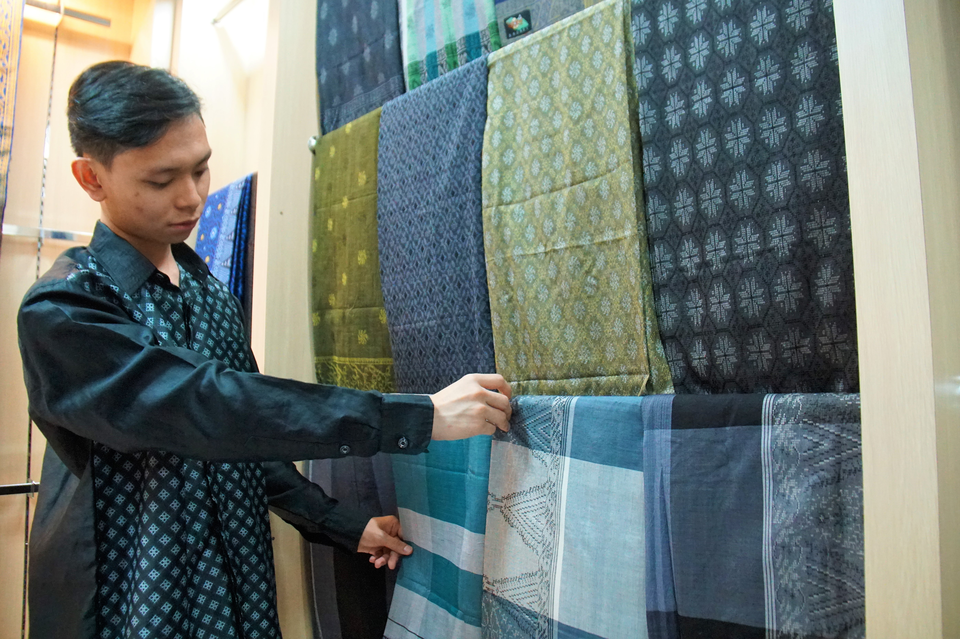
Good Design Award: an opening for export?
Hj Zainal’s clientele encompasses students to ministers to foreign diplomats. He’s participated in several foreign expos and received interest to supply overseas, but for a multitude of reasons – from production to logistics capability – he’s never been able to do so on a commercial scale.
Earlier this month, the Japan Institute of Design Promotion – who had earlier visited Batik Desamas in person – notified Hj Zainal that his submission for their Good Design Award had been accepted.
His entry centred around colouring fabrics using natural dyes that can be found in minerals and different plants – a subject he also plans to cover extensively in an instructional book on making batik for Bruneians.
Now able to embellish his brand with the Good Design Award, Batik Desamas has earned a measure of international credibility which has renewed their drive to attempt exporting.
But as Hj Zainal busies himself with meeting the right international buyers, the 67-year-old must also answer another looming question: who will replace him at the helm?
“I believe that we are the last (commercial) remaining batik producer in Brunei right now,” said Hj Zainal.
It’s worrying he says, that there doesn’t appear to be much interest from the younger generation either, leaving it up to Hj Zainal’s two children to carry the legacy forward.
“It will be up to them,” he adds as the smile fades from his lips. “For now I will do what I can.”

Batik Desamas is located at Unit 4, Level 1, Sumbangsih Mulia, Beribi, Gadong and opens from 8.30am to 4.30pm from Monday to Saturday. To get in touch directly contact +6738896463.

